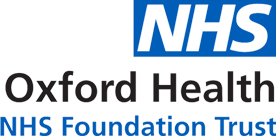Reducing self-harm incidents in young people on an inpatient psychiatric ward (Marlborough House)
Objectives and concerns
After a recent increase in the number of incidents of deliberate self-harm, which had a substantive effect on staff morale and patient experience, the ward engaged with Oxford Health Improvement Centre (OHIC) for support to try and reduce the incidence of all types of deliberate self-harm.
This project aimed to address the following factors:
- Disruption to the therapeutic environment of the ward
- Physical ward environment
- Staff and patient morale
- Communication and teamwork
Aim
To reduce the incidence of all types of deliberate self-harm by 25% within one year of the commencement of the project (1st June, 2019).
About this project
Marlborough House is a self-contained child and adolescent unit in Swindon, Wiltshire. There are 12 inpatient beds on the ward and the unit also has the capacity for six day patients. Many of the inpatients demonstrate symptoms of an emerging personality disorder or autism spectrum disorder (ASD), both of which are linked with incidences of self-harm.
In addition to this, Marlborough House is involved in the treatment of eating disorders (both inpatient and day patient), which are also often comorbid with self-harm. In 2016 staff at Marlborough House had previously implemented a highly successful improvement project reducing self-harm in children and adolescents. This project saw incidents of self-harm decline by 85%, which was maintained over a period of 18 months.
Methodology
The project follows the methodology set out by the Institute of Health Improvement (IHI), which involves consultation between the wider ward staff (not just senior ward staff) and OHIC in order to generate ideas to help reduce the number of all types of deliberate self-harm incidents. Ward staff implemented these changes with ongoing support from OHI
Outcomes
This project has now been successfully completed. Key tests of change included the included the introduction of a twilight shift (3pm-11pm) as part of the standard roster (Sun-Thurs), followed by a schedule of regular evening activities to provide distraction and routine to a relatively unstructured part of the day.
Since the introduction of the regular twilight shift and evening activities, there has been a:
- 37% reduction in self-harm incidents;
- 27% reduction in violence and aggression;
- 59% reduction in the use of restraint associated with self-harm;
- 33% reduction in the number of patients self-harming;
- 45% reduction in the number of long-term (>2 weeks) sick days;
- 48% increase in the average number of days between self-harm incidents.
Filling additional twilight shifts with ward or bank staff rather than more expensive agency staff results in a net cost reduction of £13,850. Each self-harming incident is found to take up around 4 hours of staff time in incident reporting, patient and family care. Therefore the reduction in incidents saves around 300 hours of staff time annually. This resulted in an equivalent cost saving of £5150 per annum should staff time need replacement, or the equivalent reduction in available time to care. Whilst staff would prefer to work an early shift over a twilight shift, they would also much prefer to work a twilight shift over a night shift.
Non-urgent advice: Further information
Local Project Lead
- Lorna McGuigan, Clinical Lead Nurse
QI Project Support
- Dr Jill Bailey, Associate Clinical Director
- Soo Yeo, Improvement Lead
- Dr David Hunt, Researcher for Improvement
- Dr Gurpreet Reen, Researcher for Improvement
Page last reviewed: 27 September, 2021

